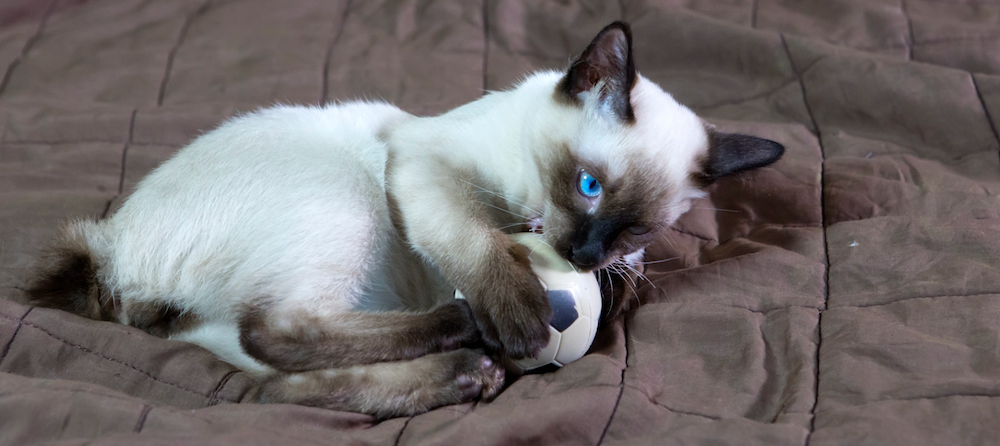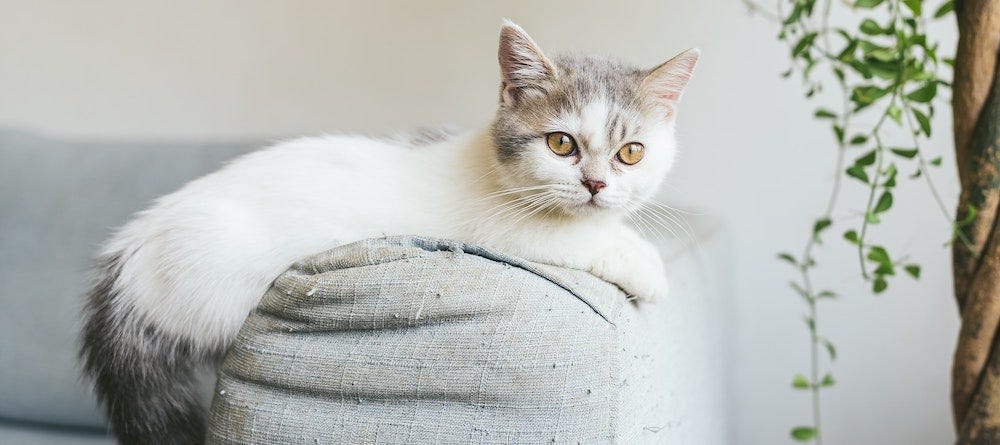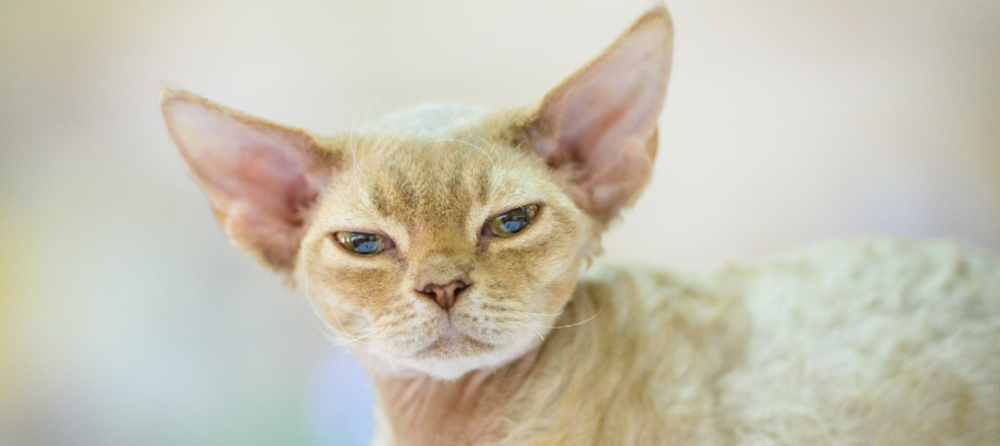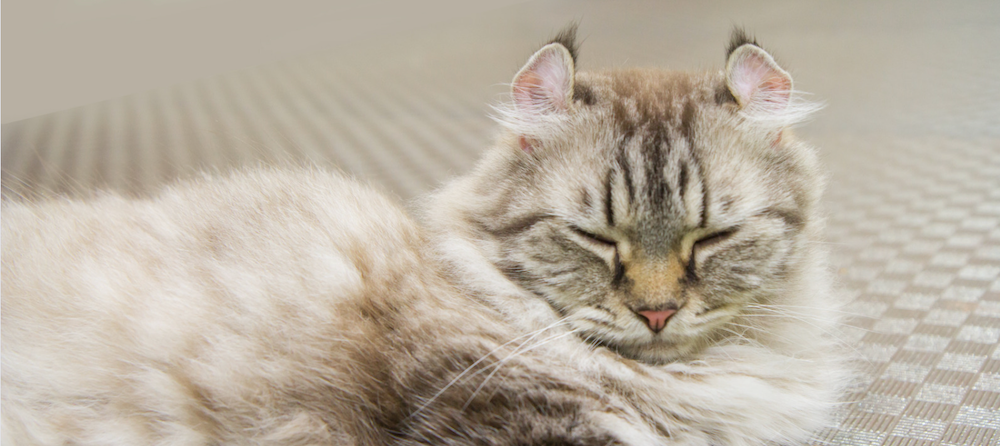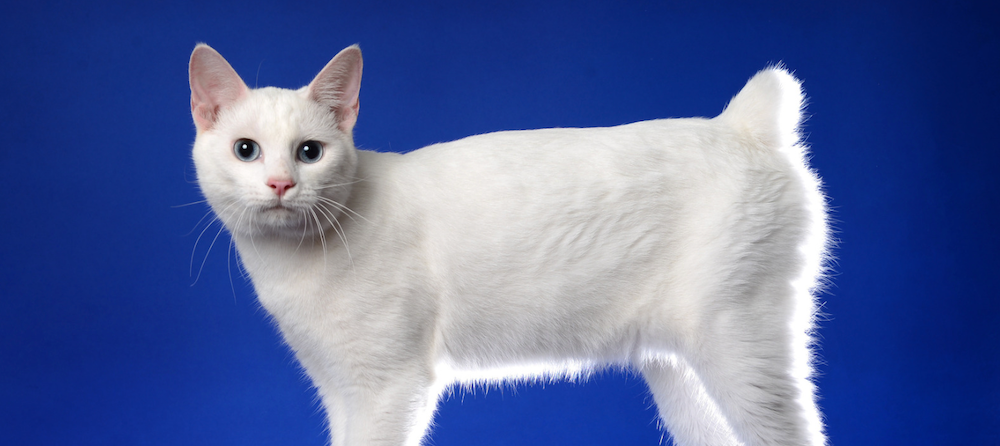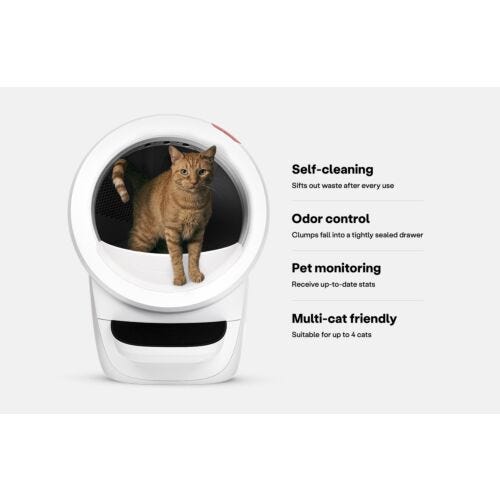If you’re not looking for a large cat breed, but are instead in the market for a feline that stays kitten-like forever, then you may be interested in any of these small cat breeds. Despite their small size, they’re big in personality and have plenty of cuddles and love to give. Many of these cats are naturally tiny, while some of the absolute smallest cat breeds are derived from one particular cat, the Munchkin.
Munchkin
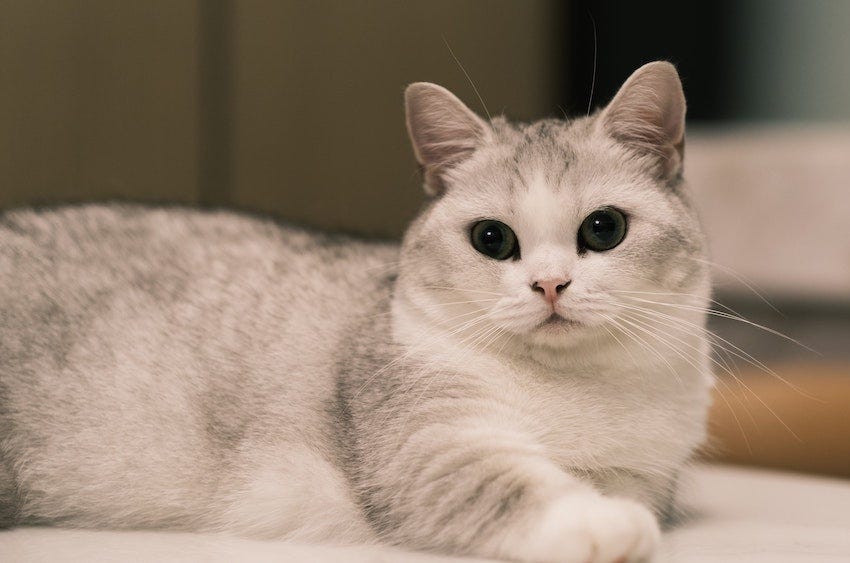
When you think of cat breeds that stay small, you probably think of the Munchkin cat. The short legs on a Munchkin cat are not a result of selective breeding but rather a natural genetic mutation.
A Munchkin cat weighs between 4 and 9 pounds in adulthood, a noticeable difference from the average 6- to 12-pound adult domestic cat. Munchkin cats are extremely outgoing and active. They don’t realize that they are smaller than most cats or behave differently because of their height (or lack thereof). Instead, they find new ways to lovingly wreak havoc and entertain their families.
These kitties are able to move very quickly, turning more easily and nimbly than other cats. Of course, they aren’t the best jumpers—so providing them with easy access to their litter box and various levels of cat furniture will boost their confidence.
Despite some controversy over the breed, Munchkin cats don’t appear to have major associated health issues. However, it's worth mentioning that Munchkins can be susceptible to lordosis and pectus excavatum—conditions that affect the spine and chest.
Toybob
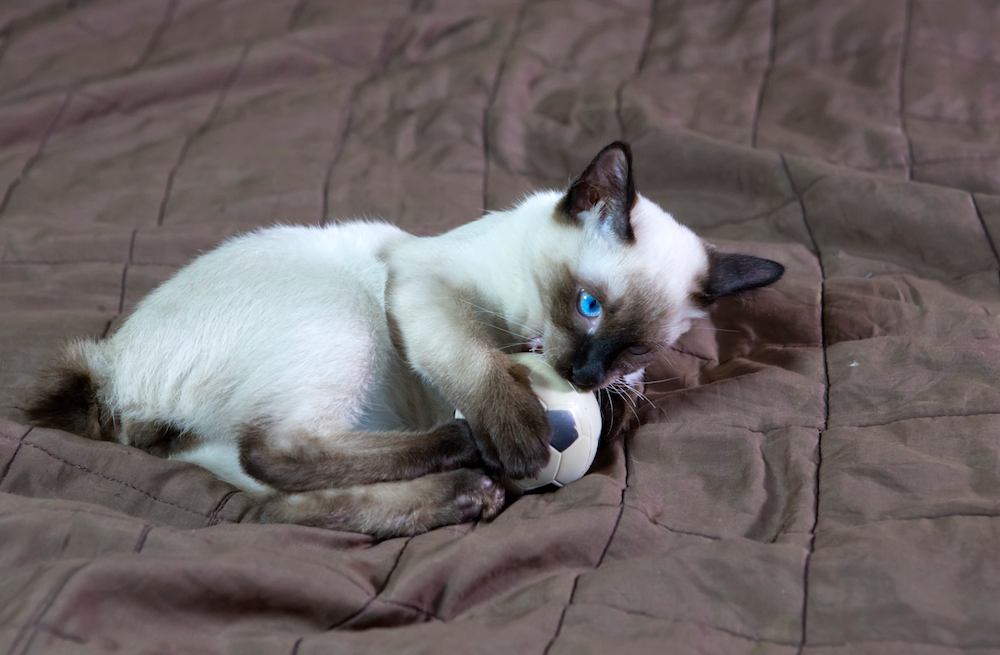
Toybob cats are truly forever kittens, weighing in at a whopping 3 to 7 pounds. This small cat breed was first documented in 1980s Russia when a seal-point cat with a kinked bobbed tail was bred with another short-tailed seal-point feline. The pairing resulted in a tiny cat with a bobbed tail. The Toybob is not bred for their smaller size, nor are they miniaturized versions of any other breed—they are just naturally teeny!
While the cat breed is rare, Toybobs are known to be special kitten-sized companions. They are affectionate, sociable cats that get along with everyone, including other pets. They follow their family members around and look for any chance to sit on a lap for cuddles.
Toybobs are usually fairly healthy and robust, but they can be prone to heart murmurs and patellar luxation, a knee dislocation condition.
Singapura

Of all the natural domestic cat breeds, the Singapura cat takes the crown for being the smallest. Weighing in at a mere 4 to 8 pounds even as adult cats, this breed of cat is the epitome of the phrase “good things come in small packages.”
However, they can be prone to obesity due to their small stature, so portion control and regular exercise are important.
The Singapura originated on the streets of Singapore and was first brought to the United States in the 1970s by two expat brothers. Besides their tiny frame, the breed is recognized for their ticked tabby short coat pattern, sepia or brown colors, and bright large eyes.
These tiny kitties have big personalities and thrive in social settings. Singapuras are the perfect size for a lap and love to cuddle. They are also mischievous, clever cats whose small bodies might have you child-proofing your cabinets.
Devon Rex
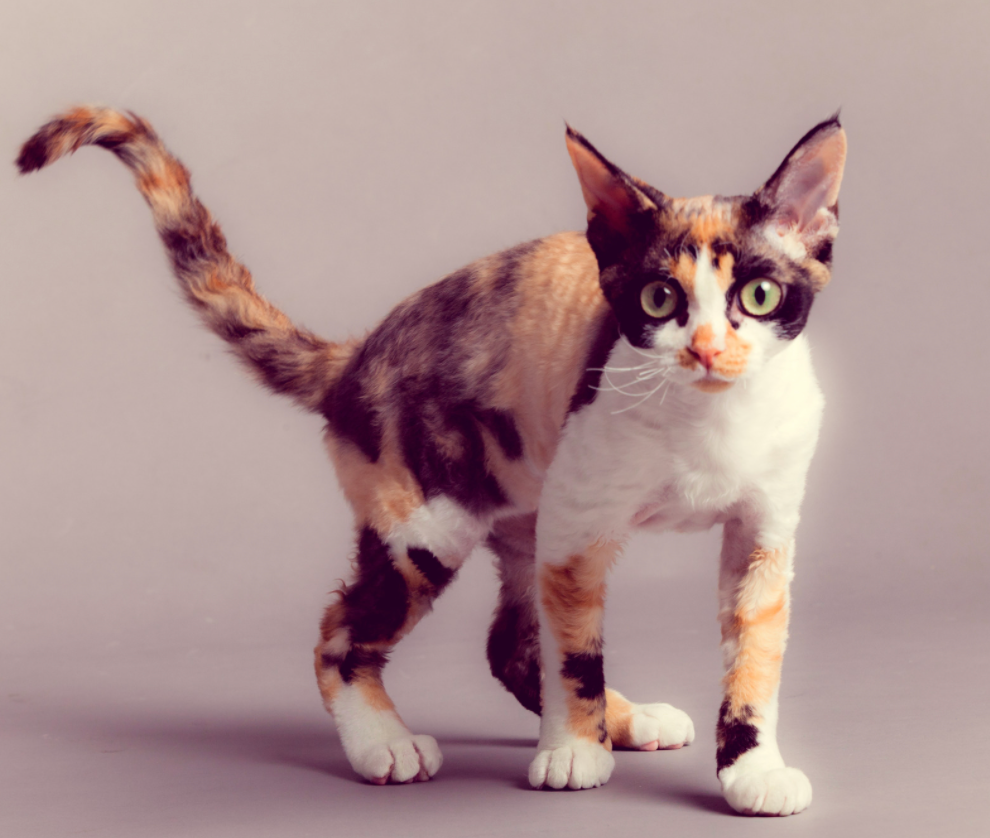
The Devon Rex cat appears to part poodle with their unique wavy, curly hair and part elf with their large, pointy ears. This cat breed is small, lightweight, and compact but displays oversized features that give them a striking, disproportionate look. Modern Devon Rex cats can trace their lineage to one feral cat with the wavy coat mutation, found in Buckfastleigh, Devonshire, England.
While this small cat breed makes for pixie-like creatures that might be flighty and hard to capture, the Devon Rex is quite affectionate and people-oriented. They do, however, have a mischievous side—but their cute antics are just that: cute!
Most Devon Rex cats weigh between 6 and 9 pounds and these cats may be at risk for hereditary myopathy, a muscle disorder, as well as patellar luxation.
Japanese Bobtail
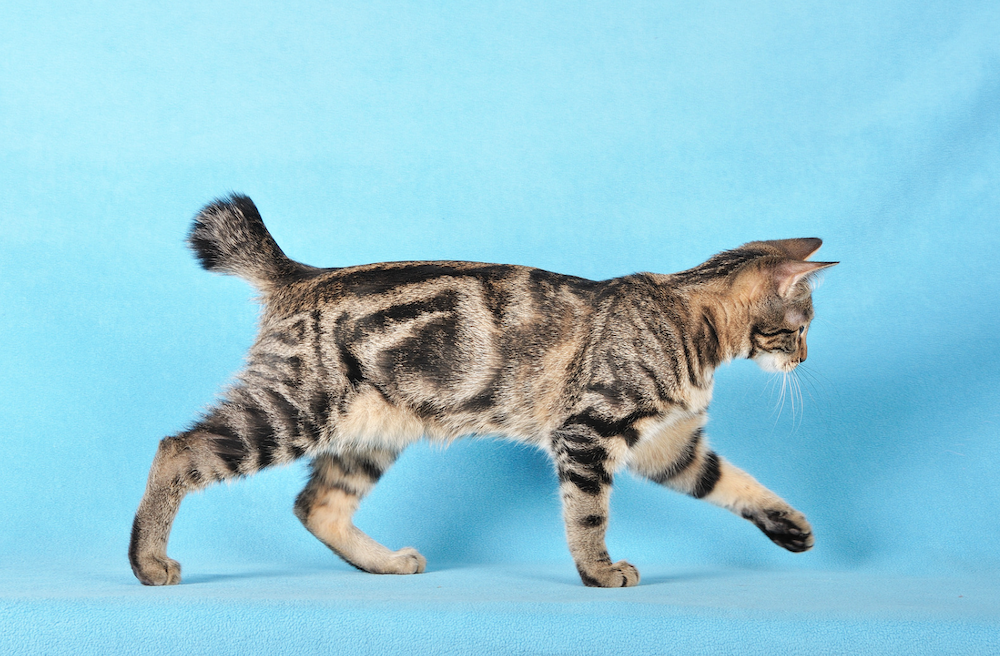
The Japanese Bobtail cat is a pint-sized breed with pint-sized tails. Their tails are formed due to a harmless and natural genetic mutation, and they resemble that of a bunny tail: short and tufted. This breed was first recorded in Japan in the early 1600s when they were released into the streets to help maintain the rat population that was infiltrating silkworm farms.
Japanese Bobtails are intelligent and love to learn new ways to interact with their humans. While such a small cat breed, these kitties are athletic and energetic, but prefer to wind down with their favorite humans each night, transitioning from running laps around the kitchen to being snuggly lap cats.
The average Japanese Bobtail typically weighs between 5 and 10 pounds. They're generally healthy, but their unique mouth shape can make them prone to dental issues. Additionally, their propensity for obesity necessitates regular vet check-ups and a balanced diet.
American Curl

The American Curl cat sports ears that curl back naturally at a 90-degree angle, a unique genetic mutation not seen in other cat breeds. Although the mutation has likely been around for centuries, this cat breed was not formally recognized until the 1980s.
Usually weighing between 5 and 10 pounds, American Curls are generally healthy. Besides their highly distinctive ears, the American Curl is known for their smaller size and curious personality. They are friendly and affectionate with their humans, making them a great family cat. This is a breed that loves a good cuddle and scratches from their favorite people.
Turkish Angora
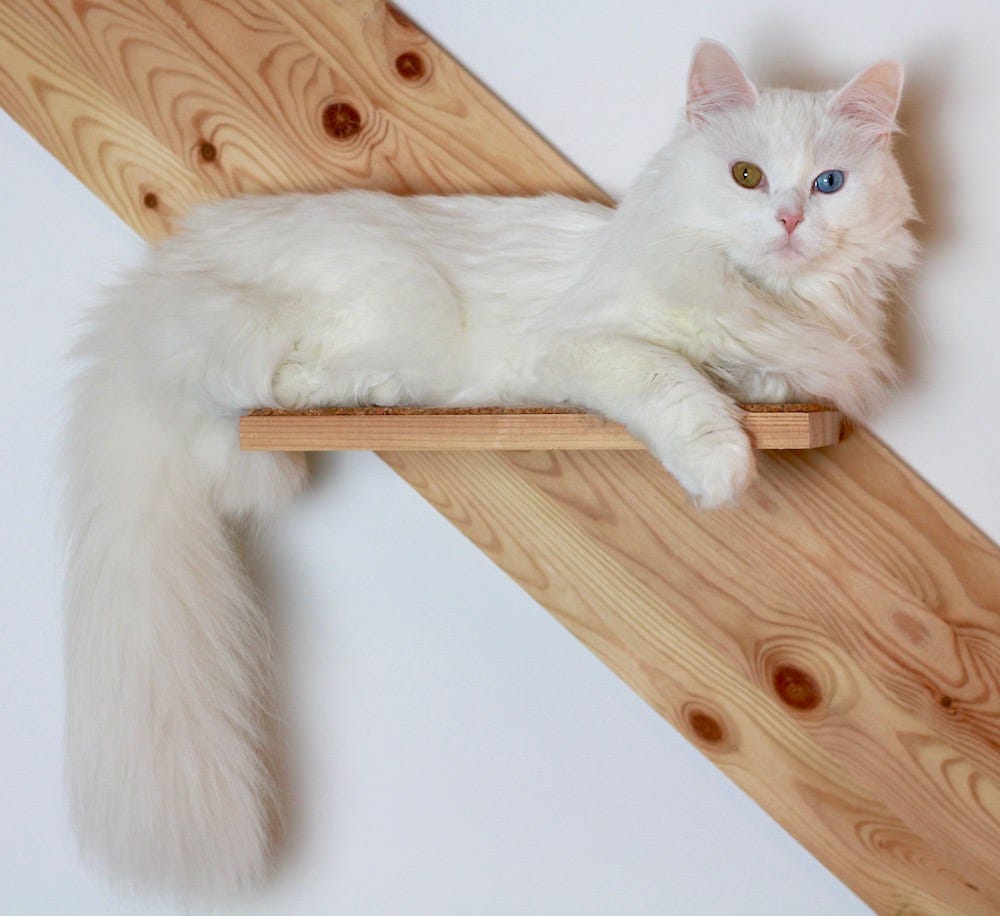
With their luscious white coat, the Turkish Angora cat may appear larger than they actually are. This small feline usually weighs between 6 and 9 pounds and is one of the oldest naturally occurring cat breeds, having likely originated in the cold, mountainous regions of Turkey centuries ago.
Although sometimes confused with Turkish Van cats, Turkish Angoras are typically much smaller. On top of their beauty, they are playful, energetic cats that love to be with their humans. Although not necessarily lap cats, Turkish Angoras are mild-tempered and known for being a sweet, gentle breed.
While this breed is known for its health and longevity, they can be prone to deafness and ataxia, a condition affecting balance and coordination.
Cornish Rex
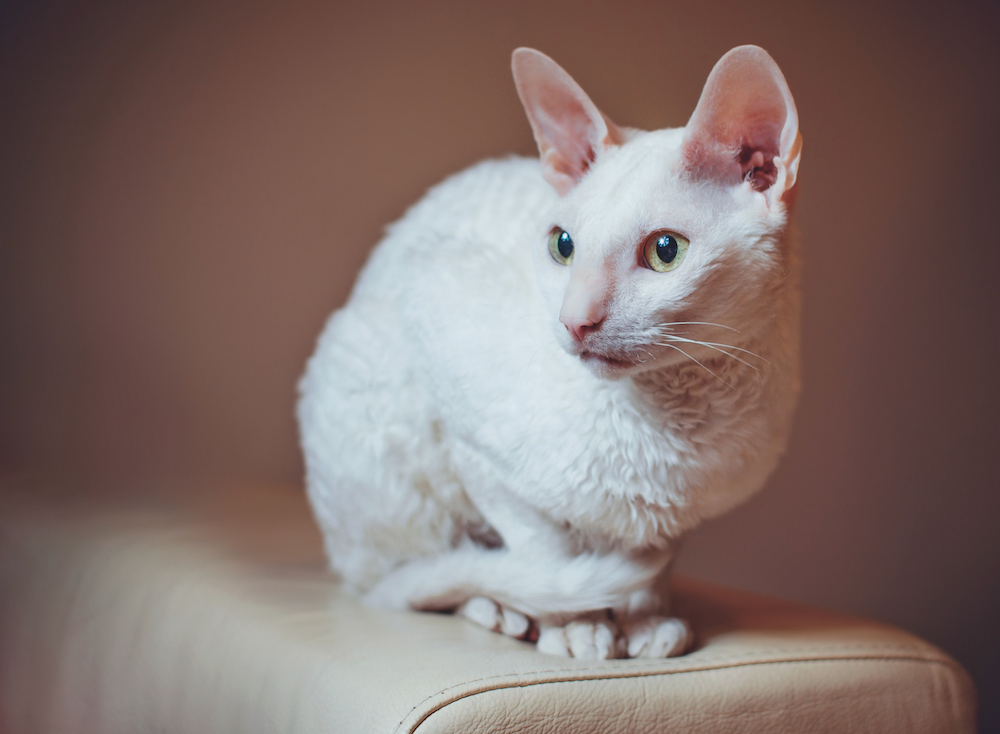
The curly-coated Cornish Rex cat is small and spry like their cousin the Devon Rex, usually weighing in between 6 and 10 pounds. These cats have large ears and eyes that give them an alien-like appearance that’s both inquisitive and attentive. As a breed, they are active and athletic—their small bodies allow them to jump and move more efficiently throughout their personal playgrounds (AKA, your house).
The Cornish Rex is known for being easy to handle and a lover of being held with plenty of snuggling. These fun-loving felines want to play, jump, and enjoy themselves all day. Most things are a game to the Cornish Rex, and they are easy to entertain because they find most things entertaining. They're generally healthy, but they can be prone to hereditary myopathy and patellar luxation.
Korat

The Korat cat typically weighs between 6 and 10 pounds and is somewhat rare outside their native Thailand, but their beauty and personality is worth showcasing. While these cats are smaller in size with a low percentage of body fat, they have a sturdy build and feel heavier than they appear.
This lovable and stunning cat, also referred to as Si-Sawat, stands out with their blue coloration and silvery sheen. They are small yet solid cats that love human companionship. For centuries Korats were given to brides on their wedding day to symbolize a happy and fortunate marriage—they have always been good luck charms and should be thought of as such even today. This breed is usually healthy, but these cats can be prone to a neuromuscular degenerative disease called Gangliosidosis.
LaPerm
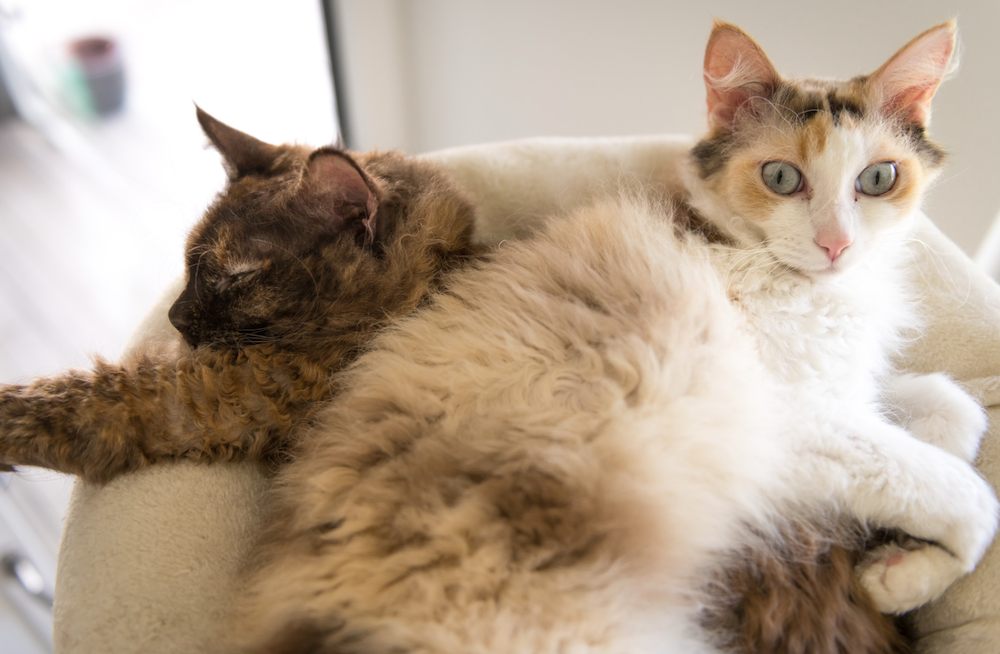
As the third Rex cat on our list of small cat breeds, the LaPerm is a tad larger weighing between 6 and 10 pounds, but still considered small to medium in size. Their curly hair, similar to a perm (hence the name), is a natural genetic mutation first identified in a barn cat named Curly in the 1980s. Interestingly, LaPerm kittens can be born bald or with very short hairs as their curls typically form in 2 to 3 years.
LaPerms are known for being affectionate, adaptable, and energetic. They love human interaction but won't demand that you pay attention to them. Since they come from barn cats, they have energy that needs to be burned—not entirely unlike working dog breeds.
They're fairly healthy, but they can be prone to hypertrophic cardiomyopathy, a heart disease.
Smallest cat breeds derived from the Munchkin cat
As the most famous of the small cat breeds, it’s no surprise the Munchkin cat has become a “parent breed” of many other feline pedigrees. They’ve contributed to the creation of several of the smallest cat breeds, listed below.
Bambino
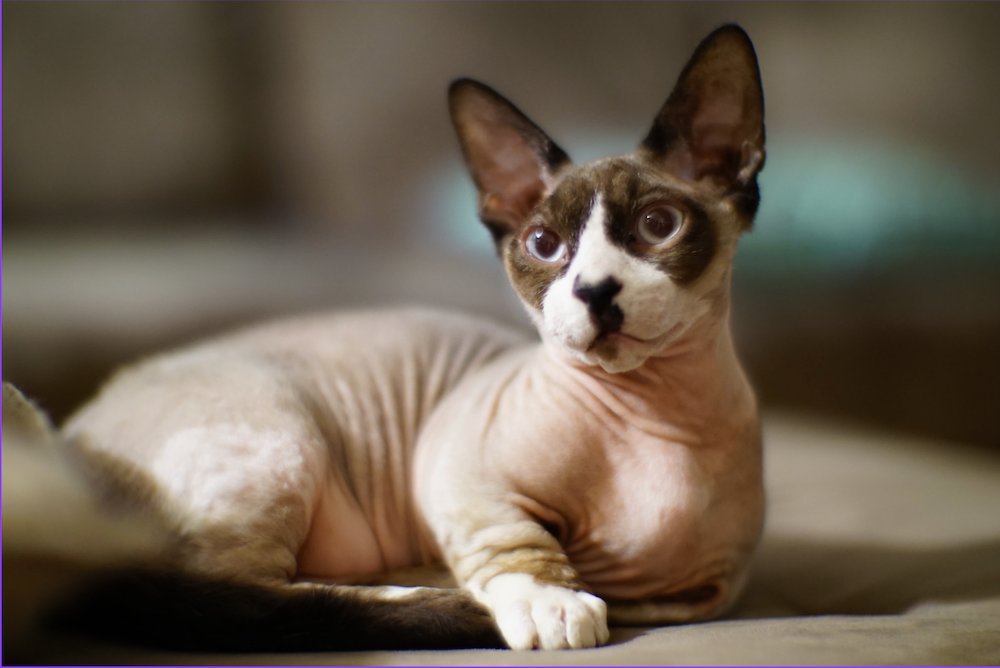
What’s short, small, and hairless? The Bambino is a cross between the Sphynx cat and the Munchkin. Also known as “baby cats,” they typically weigh between 5 and 9 pounds.
Dwelf
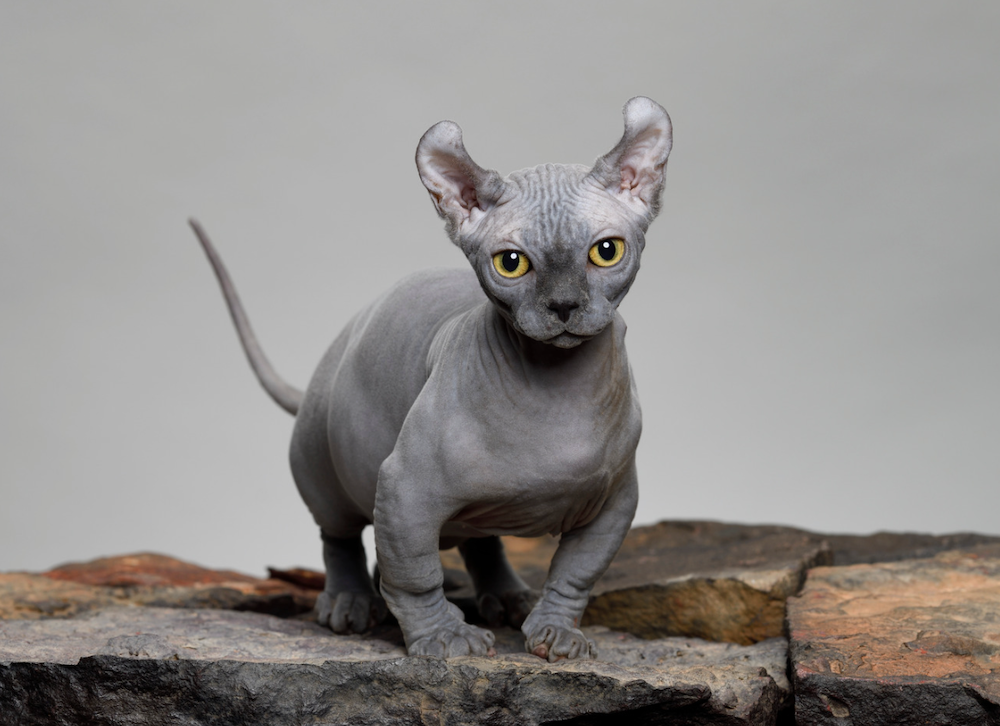
Dwelf cats—whose name derives from “dwarf” crossed with “elf”—get their short legs from the Munchkin, their hairlessness from the Sphynx, and their distinctive curled ears from the American Curl.
Kinkalow
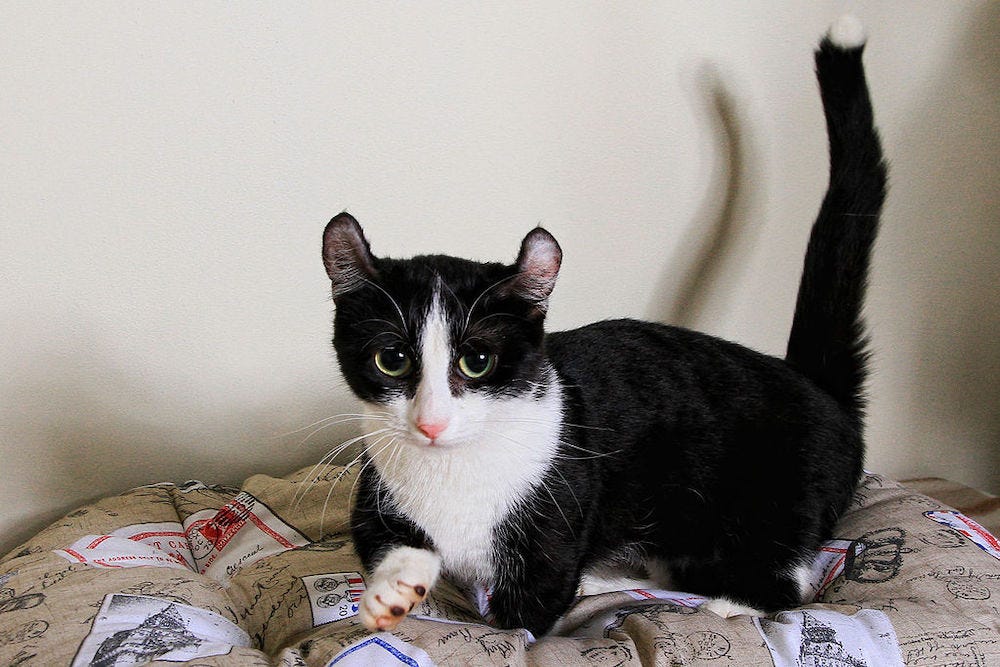
The Kinkalow is a cross between the Munchkin and the American Curl, displaying each breed’s trademark feature of short legs and curled ears. Their elegant tails are often longer than the length of their bodies!
Minuet
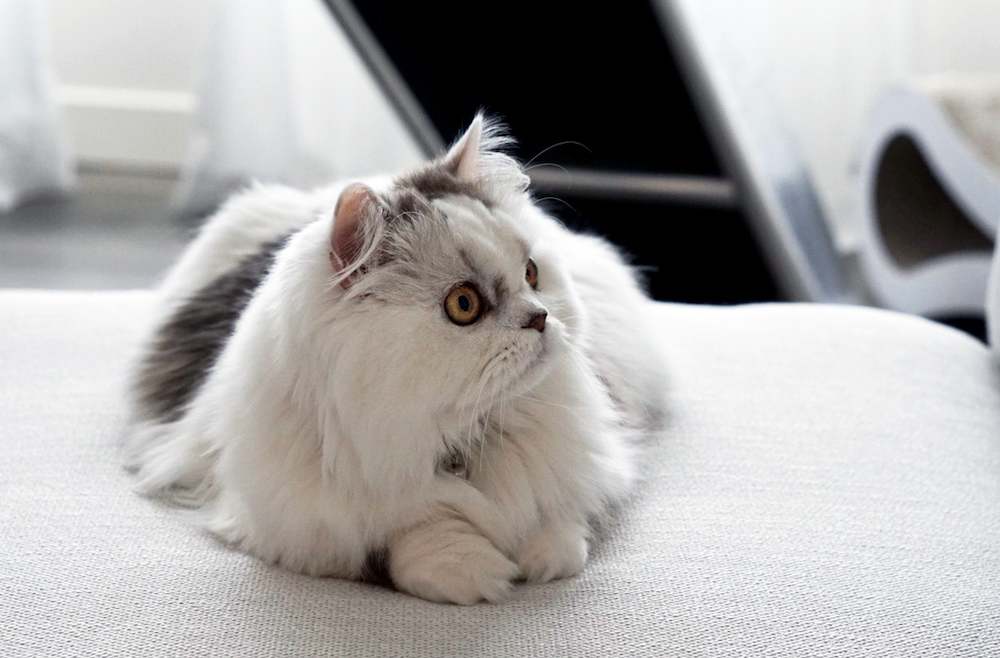
With a dense coat, squashed face, and tiny legs, the Minuet is derived from the Persian cat and the Munchkin. For their short stature, this breed is also known as the Napoleon cat.
Minskin

Like Bambinos, the Minskin breed was derived from first crossing Sphynx and Munchkin cats, and later Burmese and Devon Rex cats. At 4 to 6 pounds, Minskins are among the very smallest cat breeds.
Bonus: Additional small Munchkin cat derivations include the Lambkin cat (crossed with a Selkirk Rex) and the Skookum cat (crossed with a LaPerm).
Understanding the “teacup cat” phenomenon
Teacup cats aren’t a specific breed, but rather a description of a cat's size. Essentially, they’re miniature versions of standard cat breeds that breeders have purposefully bred to be as small as possible. This is achieved through selective breeding of the smallest individuals within a breed over several generations.
These pint-sized felines are often no larger than a standard kitten, even in adulthood, making them a perpetual embodiment of youthful feline charm. However, there is some controversy surrounding the breeding of teacup cats. Critics argue that the breeding practices used to achieve such small sizes can lead to a host of health problems and may compromise the overall well-being of the cat.
Due to their tiny size, they can be more susceptible to health issues, such as heart problems, dental issues, and bone fractures which require special care and attention. Their small bones are more fragile, and they may have difficulty accessing traditional cat amenities like litter boxes and cat towers.
In addition, teacup cats may have a shorter lifespan due to these health complications. Potential owners must be prepared for frequent veterinary visits and potential medical expenses. Despite these challenges, their small stature and kitten-like appearance make them a popular choice for many cat lovers, especially those living in small spaces or those who value the aesthetic of a petite pet.
Photo credits:
- Munchkin: Bobbi Wu via Unsplash
- Turkish Angora: © Franzioseph / CC-BY-SA-4.0
- Korat: © Heikki Siltala / CC-BY-SA-3.0
- Kinkalow: © Kirimiti / CC-BY-SA-3.0
- Minuet: © William Parker / CC-BY-SA-4.0
- Minskin: © Paulmcsorley / CC-BY-SA-3.0
